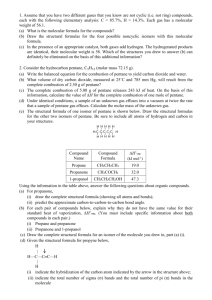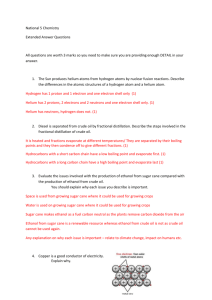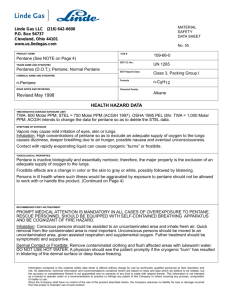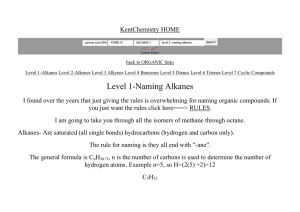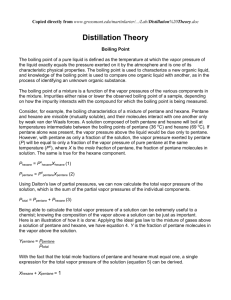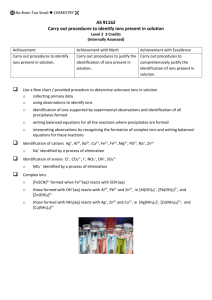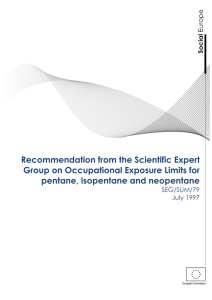Practice Final
advertisement
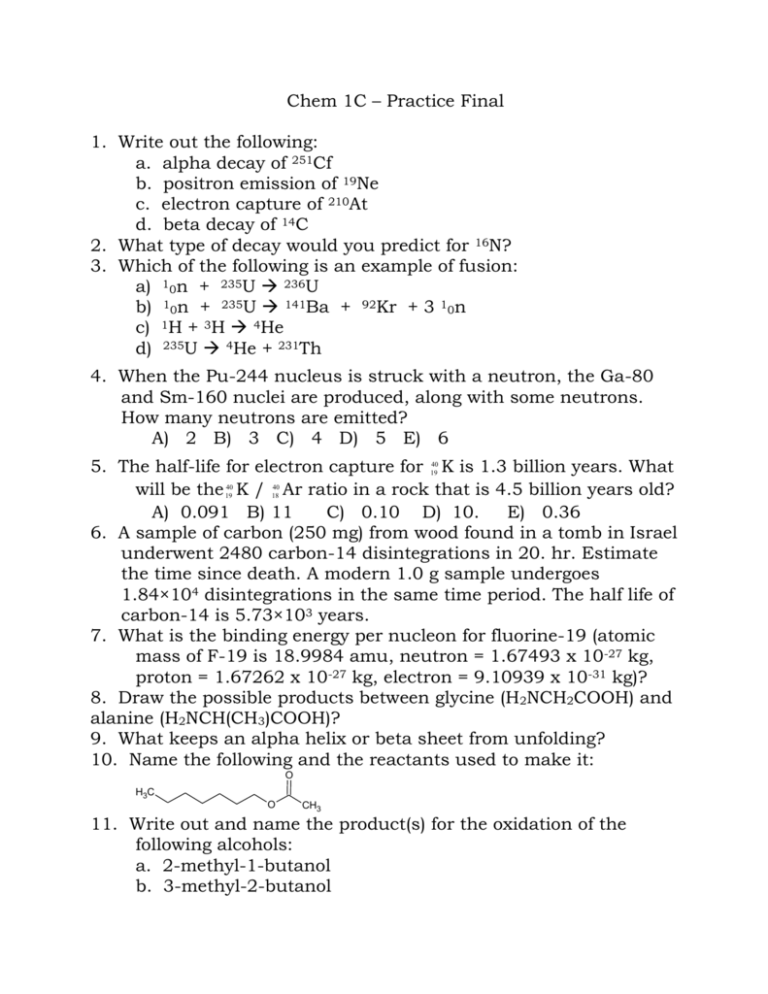
Chem 1C – Practice Final 1. Write out the following: a. alpha decay of 251Cf b. positron emission of 19Ne c. electron capture of 210At d. beta decay of 14C 2. What type of decay would you predict for 16N? 3. Which of the following is an example of fusion: a) 10n + 235U 236U b) 10n + 235U 141Ba + 92Kr + 3 10n c) 1H + 3H 4He d) 235U 4He + 231Th 4. When the Pu-244 nucleus is struck with a neutron, the Ga-80 and Sm-160 nuclei are produced, along with some neutrons. How many neutrons are emitted? A) 2 B) 3 C) 4 D) 5 E) 6 5. The half-life for electron capture for K is 1.3 billion years. What will be the K / Ar ratio in a rock that is 4.5 billion years old? A) 0.091 B) 11 C) 0.10 D) 10. E) 0.36 6. A sample of carbon (250 mg) from wood found in a tomb in Israel underwent 2480 carbon-14 disintegrations in 20. hr. Estimate the time since death. A modern 1.0 g sample undergoes 1.84×104 disintegrations in the same time period. The half life of carbon-14 is 5.73×103 years. 7. What is the binding energy per nucleon for fluorine-19 (atomic mass of F-19 is 18.9984 amu, neutron = 1.67493 x 10-27 kg, proton = 1.67262 x 10-27 kg, electron = 9.10939 x 10-31 kg)? 8. Draw the possible products between glycine (H2NCH2COOH) and alanine (H2NCH(CH3)COOH)? 9. What keeps an alpha helix or beta sheet from unfolding? 10. Name the following and the reactants used to make it: 40 19 40 19 40 18 O H3C O CH3 11. Write out and name the product(s) for the oxidation of the following alcohols: a. 2-methyl-1-butanol b. 3-methyl-2-butanol 12. For each of the following predict the highest vapor pressure: a. propane or pentane b. pentane or 2-methylbutane c. ethanol or ethanol d. cis-2-butene or trans-2-butene 13. For the following compounds (i) name them (ii) determine the number of unpaired electrons and (iii) determine if they have geometric and/or optical isomers: a. K2[Fe(CN)4(NH3)2] (low spin) b. [Mn(en)2Br2]NO3 (high spin) 14. Solutions of [Co(NH3)6]3+ , [Co(NO2)6]3-and [CoF6]3- are colored. The solutions were red, yellow and blue. Match the solution to the color. 15. Rank the following aqueous solutions by their boiling points: a. 0.1 m C6H12O6 b. 0.1 m KI c. 0.05 m K2SO4 d. pure water 16. An ideal solution is made up of 5 mols of CCl4 (P°= 300 torr) with 2 mols of CH2Cl2 (P°= 172 torr). What fraction of the vapor is CCl4? 17. When methanol and water mix it feels cool to the touch. Is the solution ideal? 18. When 25 g of unknown protein is dissolved in 150 ml of water the freezing point of the solution is -0.39 °C. Calculate the molar mass of the protein. (kf for water is 1.86 °Ckg/mol) 19. The following data was obtained for pentane. Normal freezing point Normal boiling point Triple point -131 °C 36 °C -128 °C a. Draw a phase diagram for pentane b. Which phase is most dense? c. If the heat of vaporization for pentane is 26 kJ/mol determine the boiling point if the atmospheric pressure was 0.75 atm. 20. For each of the following give the bond order and magnetism. a. CNb. O22- 21. Of the following, which molecule has the smallest bond angle? A) CCl4 B) PCl3 C) SO2 D) Cl2O E) BeCl2 22. Order the following from shortest to longest bond: C2, B2, H2, N2 23. Rank the following in order of lowest to highest boiling point: NaNO3, CH3OH, C2H6 and Ne? 24. How many unit cells share an atom which is located at a corner (or lattice point) of a unit cell? 25. Nickel metal exhibits a fcc structure. Calculate the density if the diameter of nickel atom is 248 pm. 26. Potassium iodide crystallizes in a face-centered cubic unit cell with iodide ions occupying the lattice points and potassium ions occupying octahedral holes. How many iodide ions surround each potassium ion in KI? 27. A certain metal fluoride crystallizes in such a way that the fluoride ions occupy simple cubic lattice sites, while the metal atoms occupy the body centers of half the cubes. What is the formula for the metal fluoride? A) MF2 B) M2F C) MF D) MF8 E) none of these
